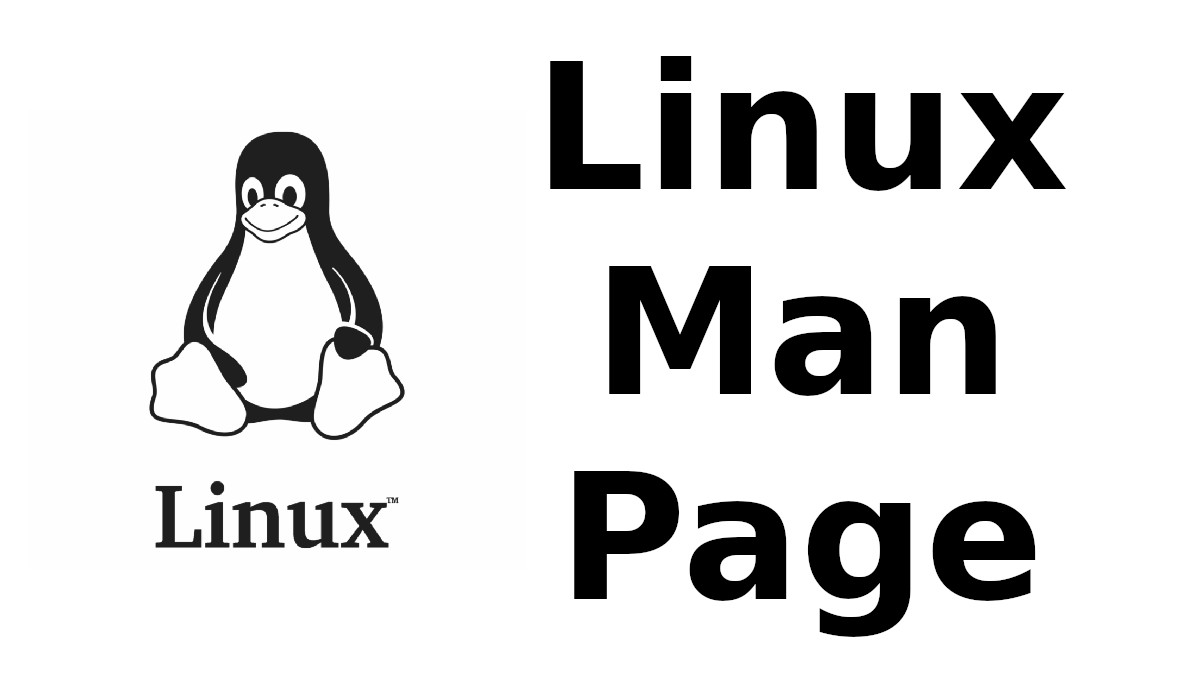 Content-type: text/html; charset=UTF-8
Content-type: text/html; charset=UTF-8
MODPROBE.D
Section: modprobe.d (5)Updated: 07/28/2020
Index Return to Main Contents
NAME
modprobe.d - Configuration directory for modprobeSYNOPSIS
/lib/modprobe.d/*.conf
/etc/modprobe.d/*.conf
DESCRIPTION
Because the modprobe command can add or remove more than one module, due to modules having dependencies, we need a method of specifying what options are to be used with those modules. All files underneath the /etc/modprobe.d directory which end with the .conf extension specify those options as required. They can also be used to create convenient aliases: alternate names for a module, or they can override the normal modprobe behavior altogether for those with special requirements (such as inserting more than one module).
Note that module and alias names (like other module names) can have - or _ in them: both are interchangeable throughout all the module commands as underscore conversion happens automatically.
The format of and files under modprobe.d is simple: one command per line, with blank lines and lines starting with '#' ignored (useful for adding comments). A '\' at the end of a line causes it to continue on the next line, which makes the file a bit neater.
COMMANDS
alias wildcard modulename
-
This allows you to give alternate names for a module. For example: "alias my-mod really_long_modulename" means you can use "modprobe my-mod" instead of "modprobe really_long_modulename". You can also use shell-style wildcards, so "alias my-mod* really_long_modulename" means that "modprobe my-mod-something" has the same effect. You can't have aliases to other aliases (that way lies madness), but aliases can have options, which will be added to any other options.
Note that modules can also contain their own aliases, which you can see using modinfo. These aliases are used as a last resort (ie. if there is no real module, install, remove, or alias command in the configuration).
blacklist modulename
- Modules can contain their own aliases: usually these are aliases describing the devices they support, such as "pci:123...". These "internal" aliases can be overridden by normal "alias" keywords, but there are cases where two or more modules both support the same devices, or a module invalidly claims to support a device that it does not: the blacklist keyword indicates that all of that particular module's internal aliases are to be ignored.
install modulename command...
-
This command instructs
modprobe
to run your command instead of inserting the module in the kernel as normal. The command can be any shell command: this allows you to do any kind of complex processing you might wish. For example, if the module "fred" works better with the module "barney" already installed (but it doesn't depend on it, so
modprobe
won't automatically load it), you could say "install fred /sbin/modprobe barney; /sbin/modprobe --ignore-install fred", which would do what you wanted. Note the
--ignore-install, which stops the second
modprobe
from running the same
install
command again. See also
remove
below.
The long term future of this command as a solution to the problem of providing additional module dependencies is not assured and it is intended to replace this command with a warning about its eventual removal or deprecation at some point in a future release. Its use complicates the automated determination of module dependencies by distribution utilities, such as mkinitrd (because these now need to somehow interpret what the install commands might be doing. In a perfect world, modules would provide all dependency information without the use of this command and work is underway to implement soft dependency support within the Linux kernel.
If you use the string "$CMDLINE_OPTS" in the command, it will be replaced by any options specified on the modprobe command line. This can be useful because users expect "modprobe fred opt=1" to pass the "opt=1" arg to the module, even if there's an install command in the configuration file. So our above example becomes "install fred /sbin/modprobe barney; /sbin/modprobe --ignore-install fred $CMDLINE_OPTS"
options modulename option...
-
This command allows you to add options to the module
modulename
(which might be an alias) every time it is inserted into the kernel: whether directly (using
modprobe
modulename) or because the module being inserted depends on this module.
All options are added together: they can come from an option for the module itself, for an alias, and on the command line.
remove modulename command...
- This is similar to the install command above, except it is invoked when "modprobe -r" is run.
softdep modulename pre: modules... post: modules...
-
The
softdep
command allows you to specify soft, or optional, module dependencies.
modulename
can be used without these optional modules installed, but usually with some features missing. For example, a driver for a storage HBA might require another module be loaded in order to use management features.
pre-deps and post-deps modules are lists of names and/or aliases of other modules that modprobe will attempt to install (or remove) in order before and after the main module given in the modulename argument.
Example: Assume "softdep c pre: a b post: d e" is provided in the configuration. Running "modprobe c" is now equivalent to "modprobe a b c d e" without the softdep. Flags such as --use-blacklist are applied to all the specified modules, while module parameters only apply to module c.
Note: if there are install or remove commands with the same modulename argument, softdep takes precedence.
COMPATIBILITY
A future version of kmod will come with a strong warning to avoid use of the install as explained above. This will happen once support for soft dependencies in the kernel is complete. That support will complement the existing softdep support within this utility by providing such dependencies directly within the modules.
COPYRIGHT
This manual page originally Copyright 2004, Rusty Russell, IBM Corporation. Maintained by Jon Masters and others.
SEE ALSO
modprobe(8), modules.dep(5)
AUTHORS
Jon Masters <jcm@jonmasters.org>
- Developer
Robby Workman <rworkman@slackware.com>
- Developer
Lucas De Marchi <lucas.de.marchi@gmail.com>
- Developer
Index
This document was created by man2html, using the manual pages.
Time: 04:45:56 GMT, September 16, 2022 Content-type: text/html; charset=UTF-8
MODPROBE
Section: modprobe (8)Updated: 07/28/2020
Index Return to Main Contents
NAME
modprobe - Add and remove modules from the Linux KernelSYNOPSIS
-
modprobe [-v] [-V] [-C config-file] [-n] [-i] [-q] [-b] [modulename] [module parameters...]
- modprobe [-r] [-v] [-n] [-i] [modulename...]
- modprobe [-c]
- modprobe [--dump-modversions] [filename]
- modprobe [-r] [-v] [-n] [-i] [modulename...]
DESCRIPTION
modprobe
Note that unlike in 2.4 series Linux kernels (which are not supported by this tool) this version of modprobe does not do anything to the module itself: the work of resolving symbols and understanding parameters is done inside the kernel. So module failure is sometimes accompanied by a kernel message: see dmesg(8).
modprobe expects an up-to-date modules.dep.bin file as generated by the corresponding depmod utility shipped along with modprobe (see depmod(8)). This file lists what other modules each module needs (if any), and modprobe uses this to add or remove these dependencies automatically.
If any arguments are given after the modulename, they are passed to the kernel (in addition to any options listed in the configuration file).
OPTIONS
-a, --all
- Insert all module names on the command line.
-b, --use-blacklist
- This option causes modprobe to apply the blacklist commands in the configuration files (if any) to module names as well. It is usually used by udev(7).
-C, --config
-
This option overrides the default configuration directory (/etc/modprobe.d).
This option is passed through install or remove commands to other modprobe commands in the MODPROBE_OPTIONS environment variable.
-c, --showconfig
- Dump out the effective configuration from the config directory and exit.
--dump-modversions
- Print out a list of module versioning information required by a module. This option is commonly used by distributions in order to package up a Linux kernel module using module versioning deps.
-d, --dirname
- Root directory for modules, / by default.
--first-time
- Normally, modprobe will succeed (and do nothing) if told to insert a module which is already present or to remove a module which isn't present. This is ideal for simple scripts; however, more complicated scripts often want to know whether modprobe really did something: this option makes modprobe fail in the case that it actually didn't do anything.
--force-vermagic
-
Every module contains a small string containing important information, such as the kernel and compiler versions. If a module fails to load and the kernel complains that the "version magic" doesn't match, you can use this option to remove it. Naturally, this check is there for your protection, so this using option is dangerous unless you know what you're doing.
This applies to any modules inserted: both the module (or alias) on the command line and any modules on which it depends.
--force-modversion
-
When modules are compiled with CONFIG_MODVERSIONS set, a section detailing the versions of every interfaced used by (or supplied by) the module is created. If a module fails to load and the kernel complains that the module disagrees about a version of some interface, you can use "--force-modversion" to remove the version information altogether. Naturally, this check is there for your protection, so using this option is dangerous unless you know what you're doing.
This applies any modules inserted: both the module (or alias) on the command line and any modules on which it depends.
-f, --force
-
Try to strip any versioning information from the module which might otherwise stop it from loading: this is the same as using both
--force-vermagic
and
--force-modversion. Naturally, these checks are there for your protection, so using this option is dangerous unless you know what you are doing.
This applies to any modules inserted: both the module (or alias) on the command line and any modules it on which it depends.
-i, --ignore-install, --ignore-remove
- This option causes modprobe to ignore install and remove commands in the configuration file (if any) for the module specified on the command line (any dependent modules are still subject to commands set for them in the configuration file). Both install and remove commands will currently be ignored when this option is used regardless of whether the request was more specifically made with only one or other (and not both) of --ignore-install or --ignore-remove. See modprobe.d(5).
-n, --dry-run, --show
- This option does everything but actually insert or delete the modules (or run the install or remove commands). Combined with -v, it is useful for debugging problems. For historical reasons both --dry-run and --show actually mean the same thing and are interchangeable.
-q, --quiet
- With this flag, modprobe won't print an error message if you try to remove or insert a module it can't find (and isn't an alias or install/remove command). However, it will still return with a non-zero exit status. The kernel uses this to opportunistically probe for modules which might exist using request_module.
-R, --resolve-alias
- Print all module names matching an alias. This can be useful for debugging module alias problems.
-r, --remove
-
This option causes
modprobe
to remove rather than insert a module. If the modules it depends on are also unused,
modprobe
will try to remove them too. Unlike insertion, more than one module can be specified on the command line (it does not make sense to specify module parameters when removing modules).
There is usually no reason to remove modules, but some buggy modules require it. Your distribution kernel may not have been built to support removal of modules at all.
-S, --set-version
- Set the kernel version, rather than using uname(2) to decide on the kernel version (which dictates where to find the modules).
--show-depends
- List the dependencies of a module (or alias), including the module itself. This produces a (possibly empty) set of module filenames, one per line, each starting with "insmod" and is typically used by distributions to determine which modules to include when generating initrd/initramfs images. Install commands which apply are shown prefixed by "install". It does not run any of the install commands. Note that modinfo(8) can be used to extract dependencies of a module from the module itself, but knows nothing of aliases or install commands.
-s, --syslog
-
This option causes any error messages to go through the syslog mechanism (as LOG_DAEMON with level LOG_NOTICE) rather than to standard error. This is also automatically enabled when stderr is unavailable.
This option is passed through install or remove commands to other modprobe commands in the MODPROBE_OPTIONS environment variable.
-V, --version
- Show version of program and exit.
-v, --verbose
-
Print messages about what the program is doing. Usually
modprobe
only prints messages if something goes wrong.
This option is passed through install or remove commands to other modprobe commands in the MODPROBE_OPTIONS environment variable.
ENVIRONMENT
The MODPROBE_OPTIONS environment variable can also be used to pass arguments to modprobe.
COPYRIGHT
This manual page originally Copyright 2002, Rusty Russell, IBM Corporation. Maintained by Jon Masters and others.
SEE ALSO
modprobe.d(5), insmod(8), rmmod(8), lsmod(8), modinfo(8)
AUTHORS
Jon Masters <jcm@jonmasters.org>
- Developer
Robby Workman <rworkman@slackware.com>
- Developer
Lucas De Marchi <lucas.de.marchi@gmail.com>
- Developer
Index
This document was created by man2html, using the manual pages.
Time: 04:45:59 GMT, September 16, 2022


![[MAN] sane-ma1509](https://blogger.googleusercontent.com/img/a/AVvXsEitfznRjvReRJUdd4v4tRKeHPIiY6C4DkbiRpW4pB5OZ0x9kOjfQtTv9Fi2i8IjVLmzastSRdRDORdabWA1dlnhBibT-DKKkYqYuonPtC15h6_o6d10zPAjZ9qQkn4NfICnrEMX-4XvPMJpiSKALSp7wLwGfP05yapMjWQCy8wvQRVQyUokHrQllrbd=w72-h72-p-k-no-nu)
0 댓글